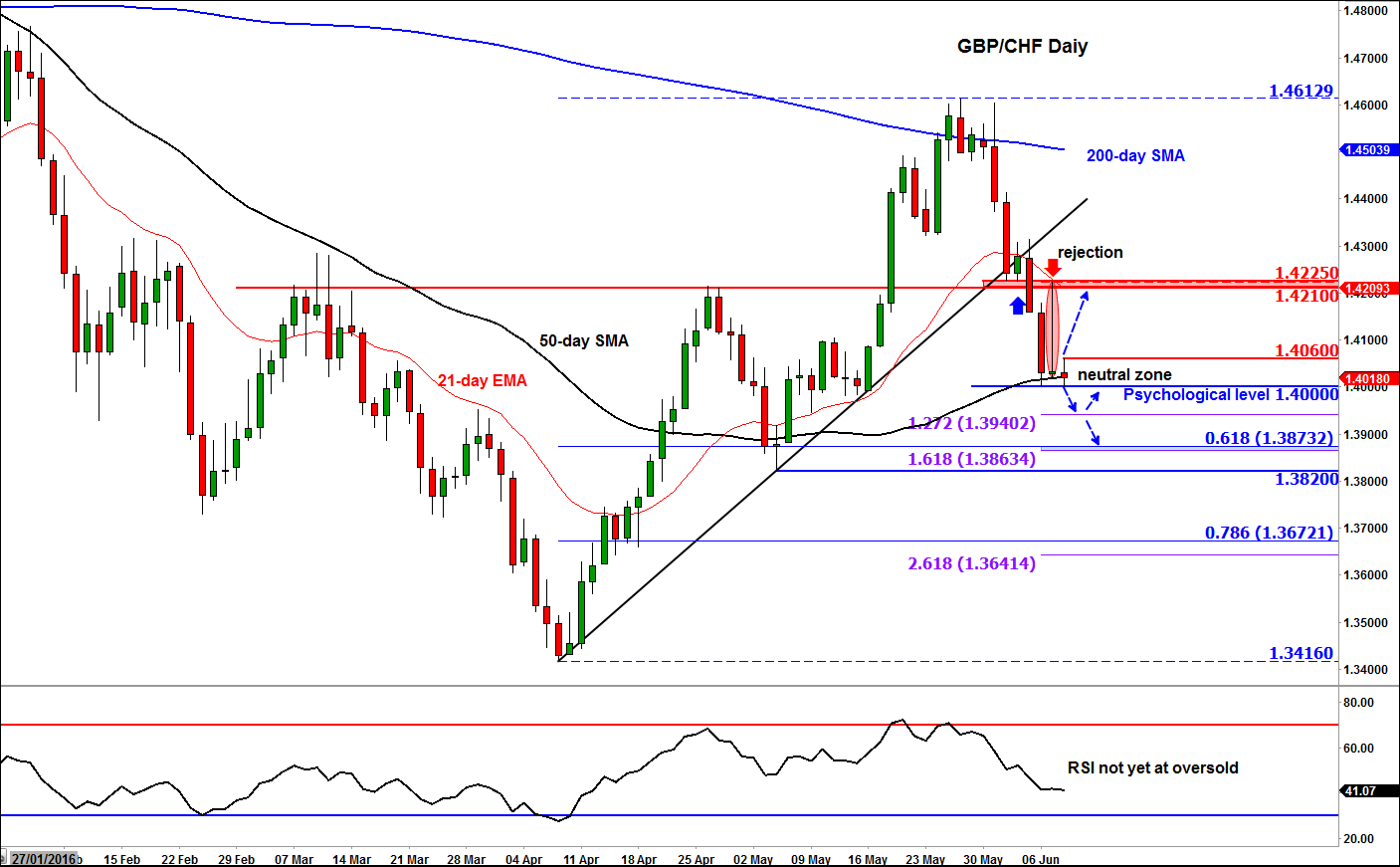The pound was struggling on Wednesday morning to add to the gains made Tuesday when fresh polls showed support for remain was narrowly ahead of the exit camp, contradicting surveys released on Monday and at the weekend which had suggested the campaign for Brexit was ahead.
Sterling did however enjoy a small bounce on the back of some strong UK industrial data which showed manufacturing production expanded at its fastest pace since July 2012, rising by 2.3% month-over-month in April. This helped total industrial production to rise 2.0% on the month, easily beating expectations for a flat reading. But the pound’s response was fairly muted, suggesting that Brexit concerns were holding traders back from making bold bullish bets.
Indeed, with the EU referendum just a couple of weeks away and sterling’s 1-month volatility being at the highest levels since the financial crisis, not many people are in the mood to hold onto their positions for long. Traders are rightly being nimble as they take advantage of short-term volatility.
In fact, there has been evidence of capital outflows from the UK, which goes to show how sour sentiment has turned in recent months. According to Sky News, citing data from the Bank of England, some £65 billion either left the UK or was converted into other currencies in March and April. This was the fastest rate of capital flight recorded since the financial crisis in early 2009. In March alone, outflows totalled £59 billion – the second biggest single-month fall on record. This may have been due to the fact that March was the first full month of the referendum debate after Boris Johnson joined the Leave campaign.
Hedging or outflows are likely to have risen further as we got closer to the June 23 referendum, providing strong downward pressure for the pound. But it should be noted that in the event the UK public votes to stay in the EU, sterling should, in theory, stage a sharp relief rally. So, the UK currency may be down now, but it is certainly not out…yet.
Technical outlook: GBP/CHF
Among the pound pairs, the GBP/CHF looks the most interesting to me today. As can be seen from the daily chart, the rally since the beginning of April stalled at around the 200-day moving average before price tested and subsequently broke back below the prior resistance level of 1.4210/25 area. Yesterday, the GBP/CHF initially rallied but the advance was rejected quite sharply upon the re-test of this area, causing it to close roughly where it had opened. As a result, the cross formed a long-legged doji candle, which effectively shows indecision. Now that the low of this doji candle and the 50-day moving average have both broken down, we may see some further follow-through in the selling pressure.
However, at the time of this writing, the GBP/CHF was testing the psychologically-important level of 1.4000. So there is a possibility for a bounce here given today’s stronger UK data. But I am more interested on a potential break below 1.40, as recent price action appears to be very bearish. If support at 1.40 gives way then there is little further reference points to watch on the way down until the May 2016 low at 1.3820. Ahead of this level, there are a couple of Fibonacci points to watch, including the 61.8% retracement against the most recent rally at 1.3870/5, which is out primary downside target. Meanwhile if today’s earlier high of 1.4060 breaks then we may see another push towards the noted 1.4210-25 area as the shorts get squeezed. Conservative traders may therefore wish to wait for the GBP/CHF to break outside of this 1.4000-1.4060 neutral zone before taking a view on the pair.





